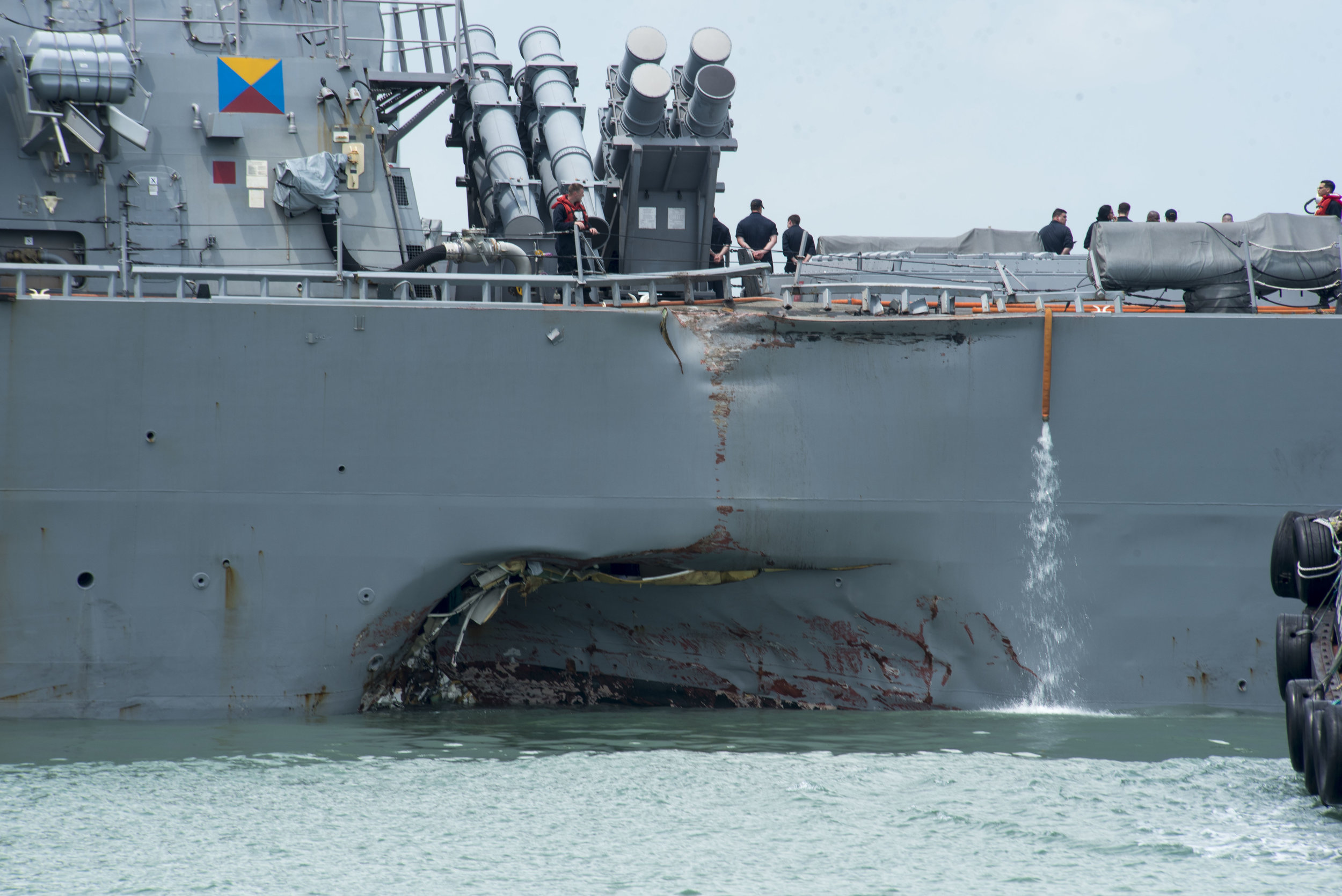Accidents at Sea and Human Behavior
/When I heard about the collision involving USS Fitzgerald (DDG 62) on June 17, 2017, my heart sank. For me and other Navy veterans who have served aboard ships like Fitzgerald, the feeling is rather personal—we’ve driven ships, we’ve been in situations that are tough to navigate, and we can imagine fairly closely the moments before and after a collision.
Then, only about two months after Fitzgerald, came the news that USS John S. McCain (DDG 56) collided with a vessel on Aug. 21 near the Strait of Malacca. Because it connects the Pacific and Indian Oceans, it’s a high-traffic area, one that puts many large ships within relatively close proximity of each other. Of the many tough waters in the world to traverse, this one is somewhere near the top of the list.
My heart—and, I’m sure, the hearts of many others—sank again.
First, of course, I think of those killed and injured. My thoughts and prayers are with them and their families.
Second, I wonder:
Why?
What happened?
Myriad explanations abound, and the investigations for both the Fitzgerald and McCain collisions are ongoing. One report, which outlines actions that occurred after the Fitzgerald collision (but doesn’t investigate the events leading up to the collision) has been released (read it here). It’s well worth reading, as it discusses the specifics of what occurred and the damage-control efforts that followed.
The investigations regarding the causes will thoroughly explore the incidents. I won’t speculate regarding what happened specifically in these situations.
I do, however, think it’s reasonable to expect—given the research on safety and accidents plus my firsthand knowledge of being a surface warfare officer in the U.S. Navy—that the investigations will find a number of related factors, including:
A chain of events. It’s difficult to imagine such an event being caused by a single poor decision, a single mechanical problem, or any other “one” cause. Given the complexity of operating a large ship safely at sea, a number of redundant systems are in place to help reduce risk. For example, on a U.S. Navy ship, more than one group of people are looking at charts and monitoring other ships nearby. Mechanical features have backups and the backups have backups. Therefore, a collision would involve a number of events in which things went wrong. The scholar James Reason’s “Swiss Cheese Model” comes to mind. This model suggests that errors occur when various failures of human behavior and aspects of the environment align such that vulnerabilities or the “holes” (hence the Swiss cheese) line up to cause an error or accident.
A human component to the situation. In any such disaster, people are making decisions. These are real people—complex humans who differ in how they think, communicate, and make judgments. The human component also involves the reality that ships are organizations. They are complex amalgamations of unique people attempting—and nearly all the time succeeding, it should be noted—at interacting in mindful, productive way. As such, issues of leadership and culture are critical. Everyone, regardless of rank or status, must know in the depths of their very being that their coworkers and leaders want them to bring confusing or even vaguely problematic situations to their attention.
When interacting in a high-risk environment, furthermore, the best organizations are ones that anticipate and contain errors quickly. Research on such “high-reliability organizations” suggests this capability allows the organization to catch small problems before they escalate into bigger ones, potentially leading to disaster. (The scholars Karl Weick, Kathleen Sutcliffe, Todd La Porte, and Karlene Roberts are some of foremost researchers in this area—for interested readers, I suggest starting here.)
I’m confident that the U.S. Navy will investigate these incidents quickly enough to promote understanding and learning, but not too quickly, as a too rapid investigation could overlook potential aspects of the problem.
I’m hopeful that the lessons learned from these incidents will be (a) the right lessons that can lead to improved performance and (b) implemented in a thoughtful-yet-rapid manner.
Until then, be safe shipmates.
About Ben Baran
Ben Baran, Ph.D., is probably one of the few people in the world who is equally comfortable in a university classroom, a corporate boardroom and in full body armor carrying a U.S. government-issued M4 assault rifle. Visit: www.benbaran.com.
Ben is also the author of the e-book, The Navy’s 11: Reflections and tips for leaders everywhere based upon the U.S. Navy’s Leadership Principles. It’s full of ...
- Leadership guidance, based upon the U.S. Navy's Leadership Principles, which have been used to create and sustain the greatest navy known to humankind;
- Real-world examples, based upon my nearly 20 years of experience with the U.S. Navy and a decade of academic research combined with business consulting;
- Actionable tips, meant to help you implement the leadership principles in your daily life and work; and
- Much more!



